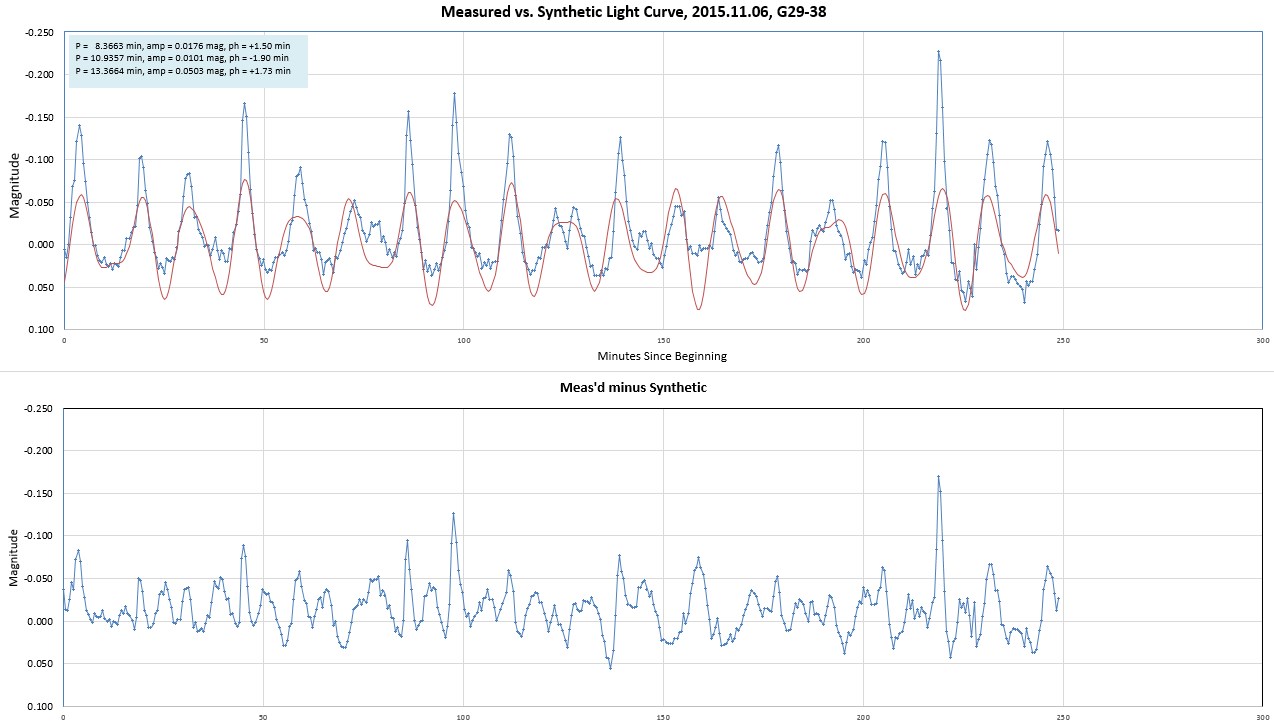 Synthetic LC compared with observed
one, using just 3 components.
Synthetic LC compared with observed
one, using just 3 components.This web page is devoted to a photometric monitoring of white
dwarf G 29-38 (WD 2326+049) for the purpose of identifying transit
features produced by an asteroid dust cloud (an idea given a bost
of inspiration by Vanderburg et al (2105) and Croll et
al (2015) Kepler K2 observations of WD 1145+017). The goal
for these observations is to detect a transit feature or to
constrain how deep such a feature could be. The observations are
by advanced amateurs using telescope apertures of 14" or smaller.
G 29-38 (hereafter G29-38) is classified as a DAZd white dwarf,
meaning that it has a mostly hydrogen atmosphere with metal
absorption lines, indicating the presence of a continuous flow of
dust onto the WD surface (and rapidly sinking). The IR flux
spectrum exhibits emission lines that can be used to produce a
mineralogy model (Reach et al, 2009). Brightness variability is
well-established (McGraw et al, 1975), with timescales typically
10 to 17 minutes and range of variation ~ 0.23 magnitude. These
variations are too slow for the radial pulsation mechanism, so it
has been suggested that the pulsations are non-radial (e.g.,
movement parallel to the surface).
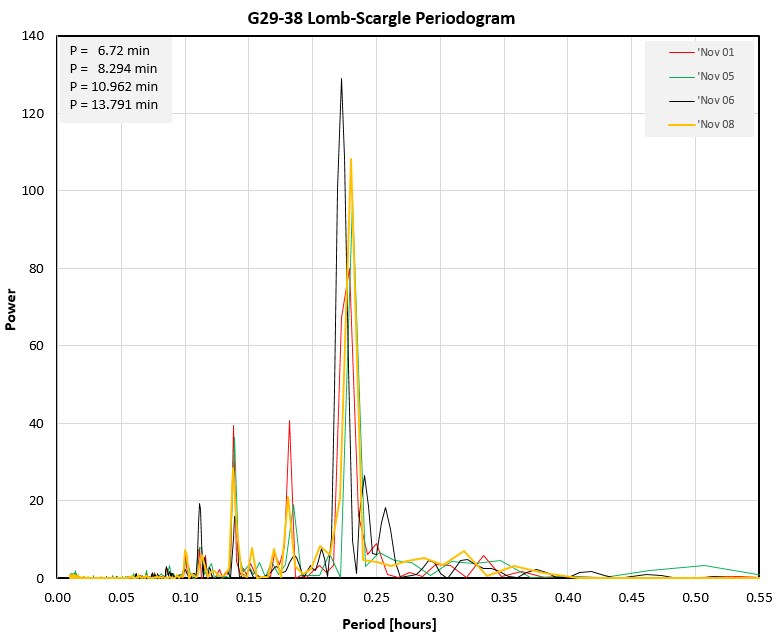
2015 Nov 29
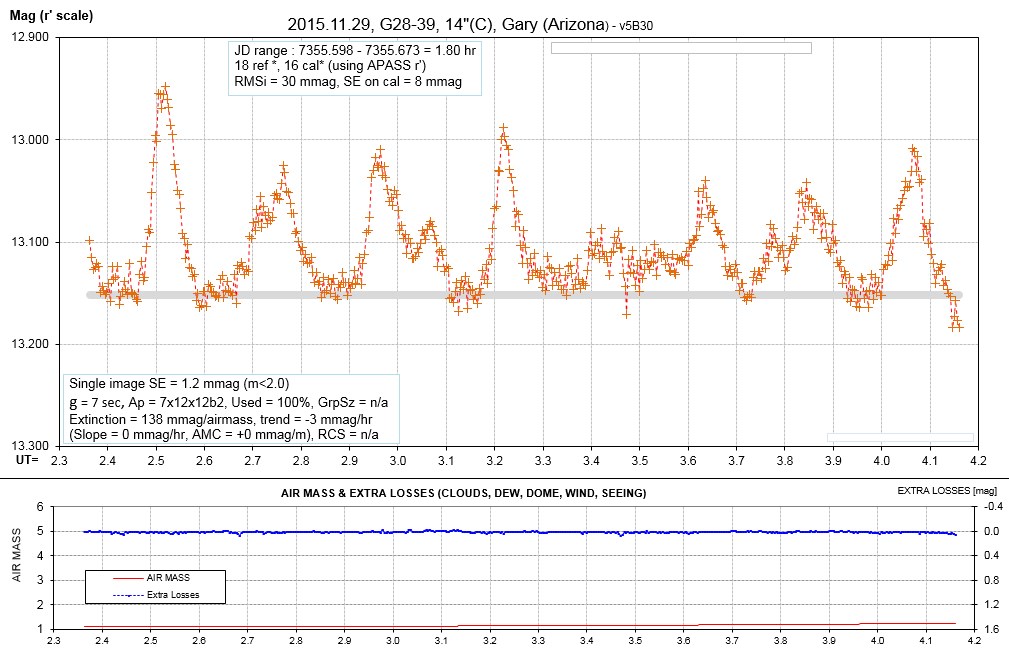
2015 Nov 08
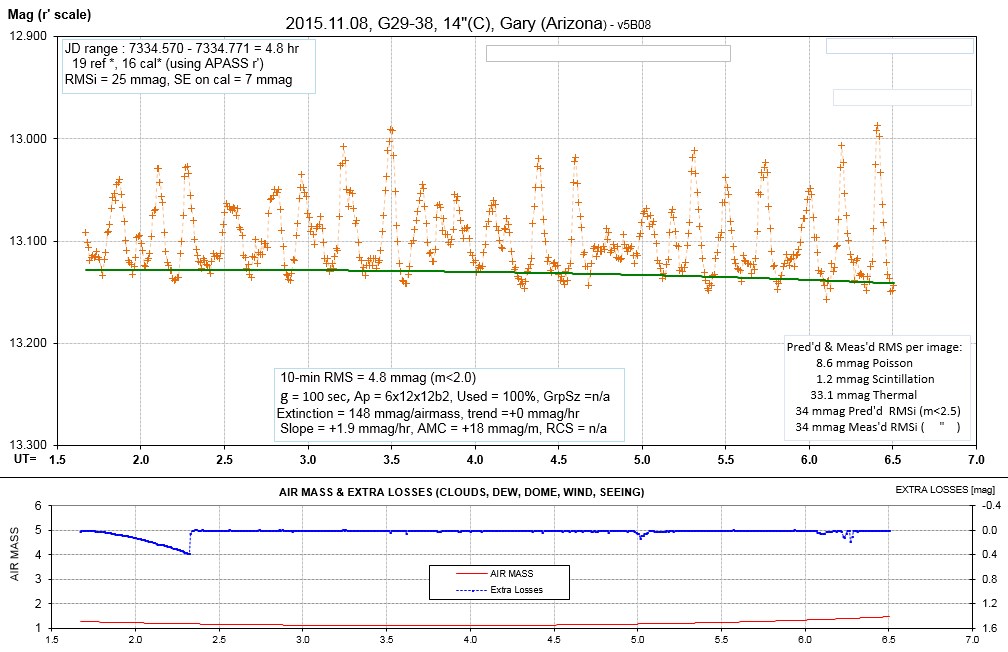
2015 Nov 06
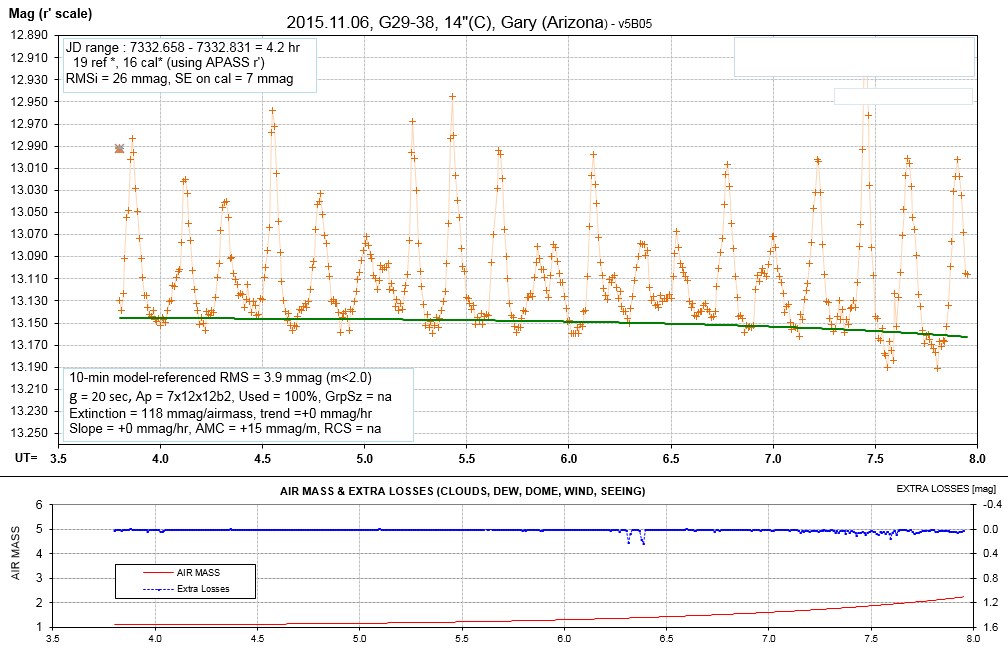
 Synthetic LC compared with observed
one, using just 3 components.
Synthetic LC compared with observed
one, using just 3 components.
2015 Nov 05
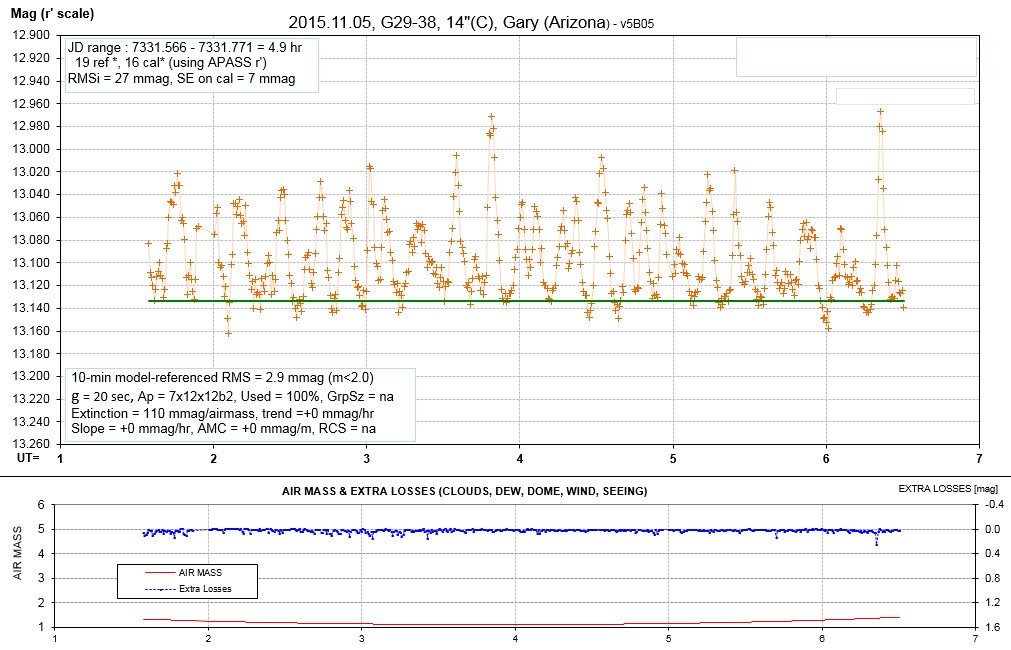
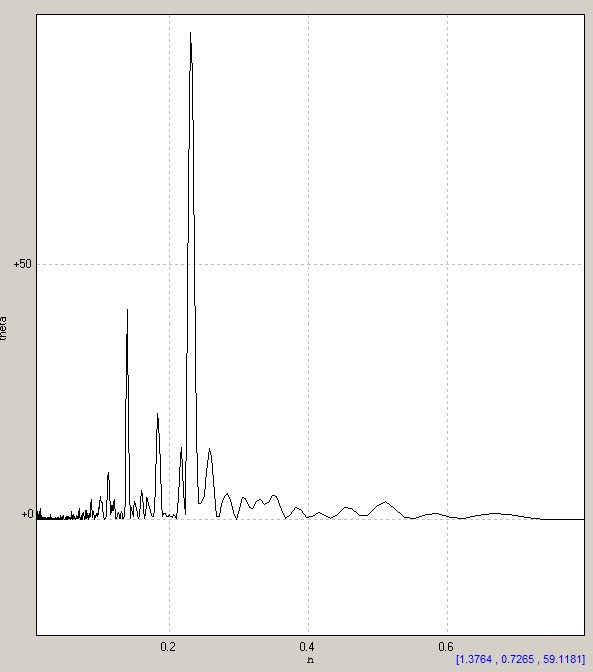
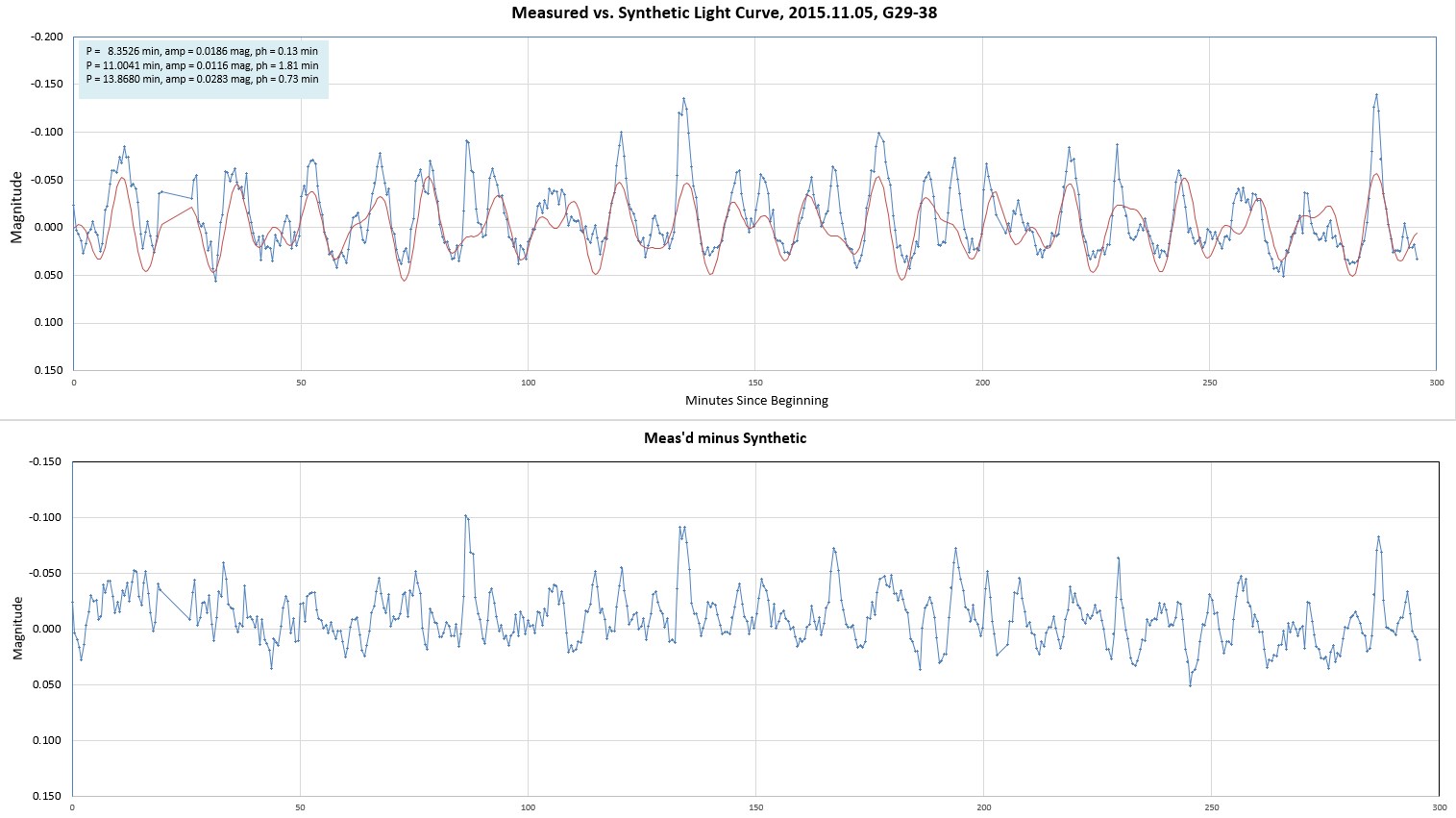
2015 Nov 01
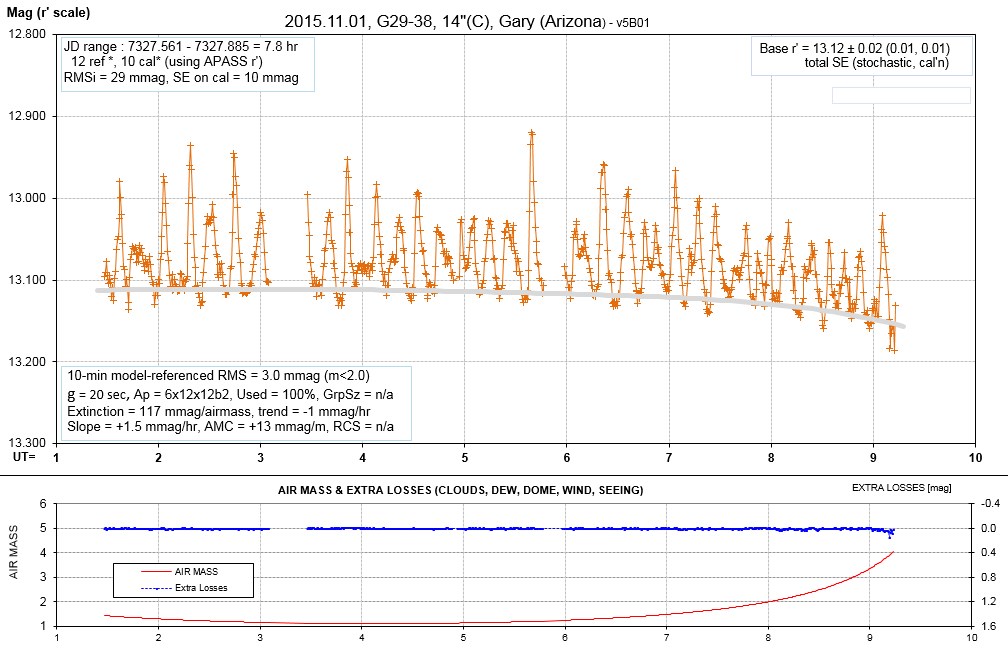
Light curve with fit using slope and air mass
curvature.
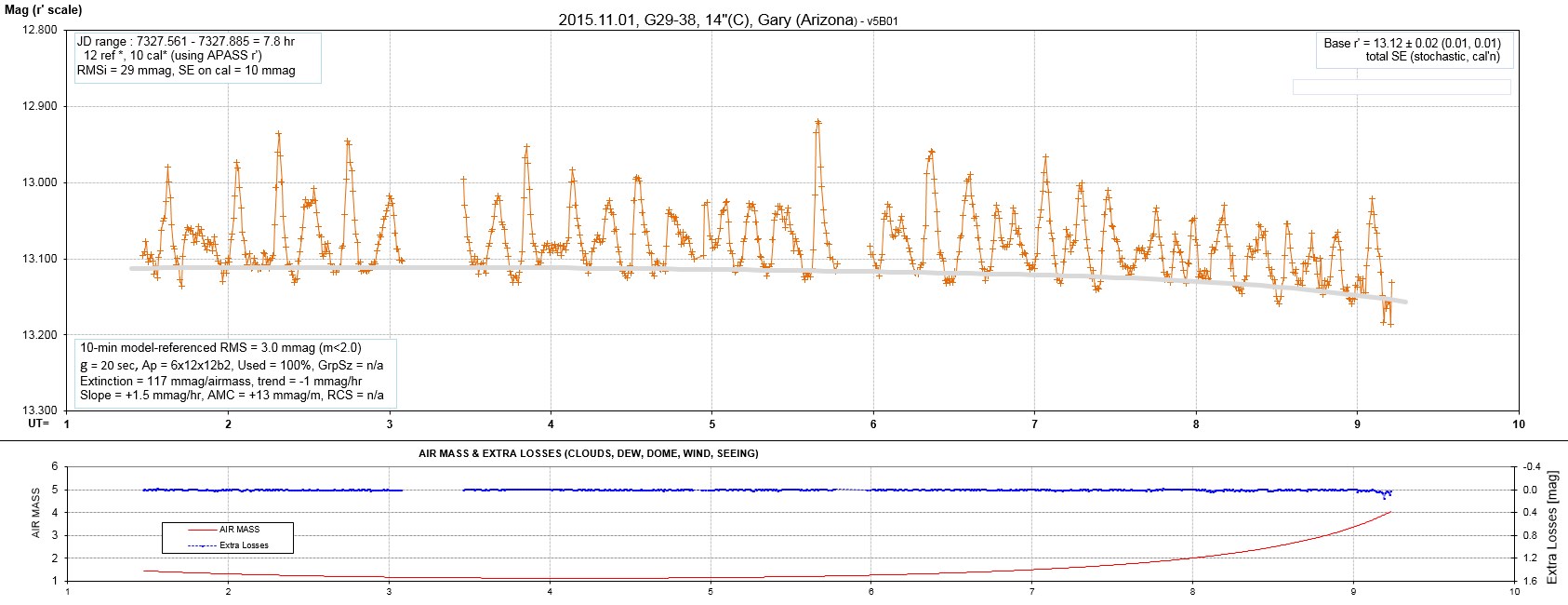
Same data but with a stretched timescale to better
show the variation structure.
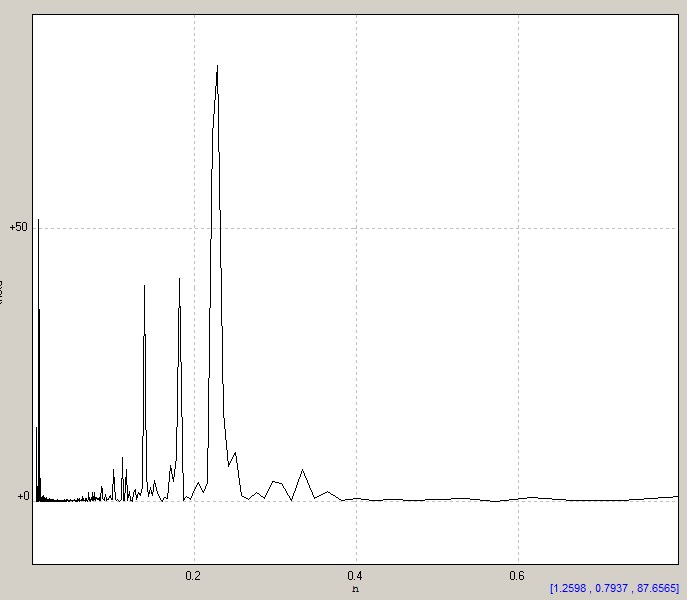
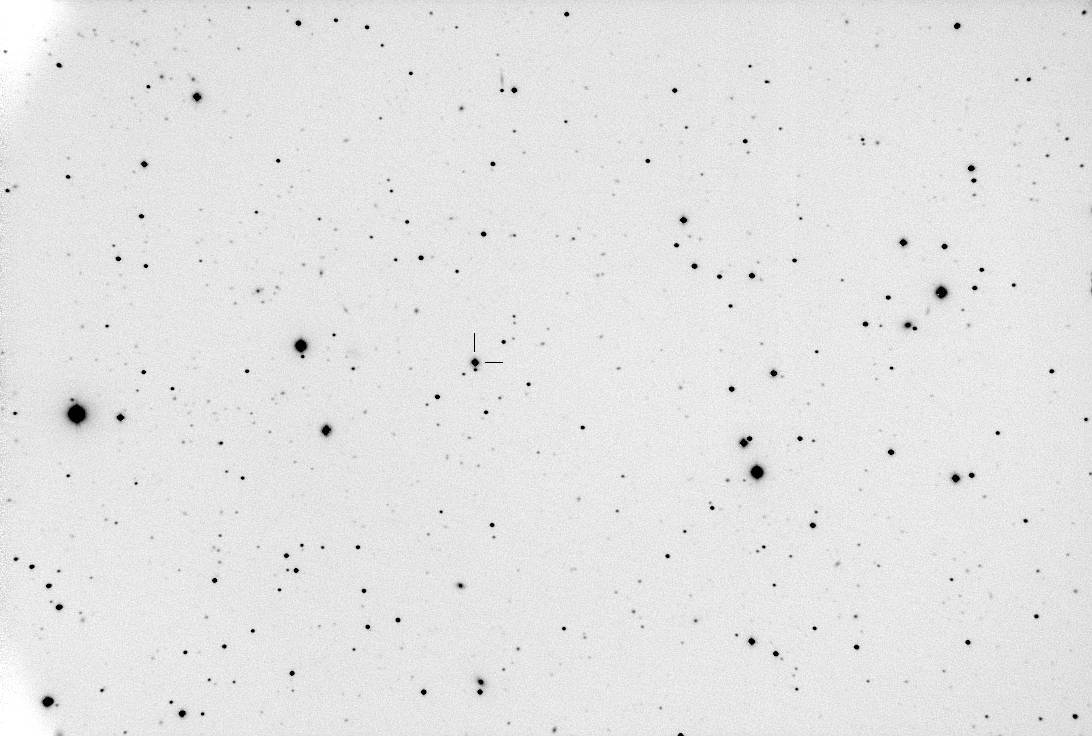
____________________________________________________________________
WebMaster: B. Gary. Nothing on this web page is copyrighted. This site opened: Nov 01, 2015